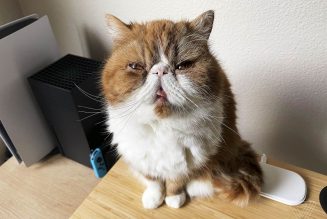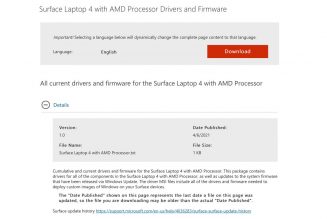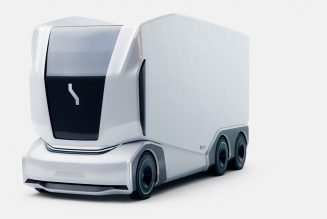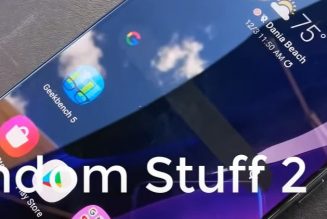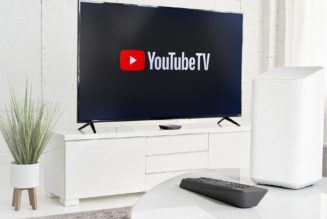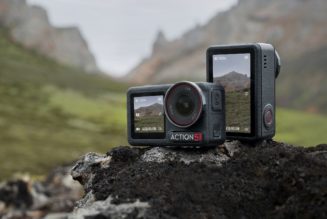I was standing inside Virgin Galactic’s tourist spaceplane with three translucent green heads floating in front of me. One of the heads was explaining how the white-and-teal passenger seats that dotted the walls of the cabin were made out of aluminum and carbon fiber materials. White disembodied hands gesticulated in the air as the head — which belonged to Jeremy Brown, Virgin Galactic’s design director — spoke.
In reality, Brown’s head is neither green nor detached from his body. Brown, the other two virtual tour guides, and I were all wearing Oculus Quest headsets, which allowed us to meet virtually and peruse the cabin interior of Virgin Galactic’s spaceplane called VSS Unity. It’s the company’s primary spacecraft, designed to take paying customers to the edge of space and back for a quick taste of weightlessness.
Virgin Galactic, helmed by billionaire Richard Branson, had high hopes of showing off the new cabin design during a spectacular in-person event, in keeping with Virgin’s theme of flashy unveils. But due to the COVID-19 pandemic, Virgin Galactic decided to make the cabin unveiling a virtual one. During a live stream event today at 1PM ET, the company will take enthusiasts on a virtual walkthrough of the cabin, while those looking for a more personalized experience can download a smartphone app, which displays the inside and the outside of the spaceship in augmented reality. The company loaned me and other journalists Oculus Quest headsets, allowing us to get the immersive experience of seeing the cabin with our own eyes.
[embedded content]
“For us, the interior is the point, in a way,” George Whitesides, the newly minted chief space officer of Virgin Galactic, formerly the company’s CEO, told me before the tour. “The experience is the point. And so, in many ways, the product is the cabin and how it relates to the space environment and the views from space. It’s all about this.”
I began the tour on the virtual runway, with VSS Unity in the foreground. Brown was joined by his fellow floating heads: Stephen Attenborough, the commercial director for Virgin Galactic, and Jeremy White, the design director for the design firm Seymourpowell, which helped with the project. Off to the side of Unity were two white Range Rovers. They’re the cars that will transport customers out to the spacecraft from Spaceport America — the giant turtle-shaped building in New Mexico that serves as Virgin Galactic’s main hub. I moved around Unity by flicking a joystick on one of the two Oculus controllers in my hands, which beamed me around the runway as if I were a ghost coming in and out of existence. After goofing around for a bit, my guides swapped out the runway setting for Unity’s interior.
:no_upscale()/cdn.vox-cdn.com/uploads/chorus_asset/file/20537574/Virgin_Galactic_Spaceship_Cabin_In_Payload_Configuration.jpg)
All at once, I was inside the fuselage, flanked by the three floating heads. Six passenger seats that looked like they wouldn’t be out of place in a racecar were attached to the walls of the spacecraft. The white-and-teal chairs were partly designed by Under Armour, which also helped design the blue flight suits customers will wear during their trips. The seats will be tailor-made for each passenger, Brown told me. There are four different sizes of seats the company can swap out in the cabin, and the company can add extra padding to the seats to make sure each customer fits snugly during flight.
The seats were spaced far apart, with a long recessed walkway in between them, running down the center aisle of the spacecraft. The back wall of the fuselage sported a giant silver mirror displaying a warped reverse image of the cabin. The mirror will provide customers with a live look at themselves in microgravity. “I think it is just a brilliant design choice,” said Whitesides. “It’s probably the biggest mirror put in a spaceship or a space vehicle or a space habitat. And the idea there is that people can actually experience themselves in space and get a sense of what that looks like visually.”
Sure, looking at yourself will be cool, but the whole point of the trip is the view outside the spacecraft. “Every seat is a window seat,” Brown told me. Next to each seat was a big circular window, with a thick black rim. Another window was positioned directly above each passenger’s head. When the crew makes it to microgravity, they’ll be able to float from the side window to the ceiling window with ease. The rims around the windows also had tiny crevices — handholds for floating passengers to grab in order to peer out the glass.
:no_upscale()/cdn.vox-cdn.com/uploads/chorus_asset/file/20537550/Virgin_Galactic_Spaceship_Seats_In_Space.jpg)
The cabin takes a few cues from Branson’s Virgin Atlantic airplanes. Lights around the windows will glow different colors depending on where VSS Unity is on its journey to space: white for the initial climb and orange for when the rocket engine ignites. The lights go black when in space. Tiny screens on the back of each seat will display each phase of the trip to passengers as well.
In the scene that we were in, the window lights glowed white. I looked out the window and noticed the New Mexico desert below me. VSS Unity wasn’t in space yet; it was at an altitude of 35,000 feet, the height at which the real spaceplane will drop from its carrier airplane and ignite its engine, climbing toward space. Brown flicked a switch I couldn’t see, and we blipped into the cabin again — but the view outside the windows changed. This time, we could see the stars and the curvature of Earth above our virtual green heads. We were in microgravity (well, in the headset).
In this scene, the seats were all reclined to give people more room to float around the cabin once Unity reaches space. Here, above the atmosphere, passengers will unhook from their seatbelts. The harness consists of five gray straps that converge at a circular buckle that sits on a passenger’s chest. A simple twist will release them all, and a special mechanism will retract the seatbelts. That way, passengers don’t have to deal with belts floating around them in zero-g. “We had an internal phrase called ‘kelping’ — you know, like a kelp forest — and we wanted to avoid that,” said Whitesides.
Brown moved his virtual white hands around each seat to point out the mechanics of the straps. Meanwhile, White placed his floating hands on the rim of a window and stuck his green face through the glass. The move gave me an idea. I stood on my chair in my apartment and burst through the ceiling of Unity. I was halfway in space. Earth glistened above me — the orange Southwestern desert of the United States in prime view though my secret sunroof. After a brief moment of awe, I sat back down. “Sorry, I had to,” I said.
:no_upscale()/cdn.vox-cdn.com/uploads/chorus_asset/file/20537552/Virgin_Galactic_Spaceship_Seats_Detailing.jpg)
The attention to detail was pretty remarkable. Each headrest had little crevices to accommodate anyone wearing their hair in a ponytail for the flight. The top two seatbelt straps on each chair were connected to protrusions called “presenters,” making it extra easy for customers to find their belts when they need to strap back into their seats. “[Our customers] have different ranges of motion and different amounts of physical strength, so we wanted to make sure that that was very easy to do in zero gravity because people will be putting on their five-point harness in the zero-g,” said Whitesides.
Then there were the cameras. Sixteen cameras are situated throughout the cabin to capture the experiences of future crews. Each window had a camera to snap up-close moments of wonder, while other cameras on the floor and the ceiling will provide more comprehensive views of the floating passengers. I was assured that the footage would be downloaded swiftly following a flight so that each customer could get their videos as quickly as possible once on the ground.
Standing there in the virtual fuselage, I found myself eager to try out the flight for real. But there’s still much more for Virgin Galactic to do before people will be experiencing these swanky chairs in space. The real VSS Unity is still being outfitted with the seats, for one thing. And Virgin Galactic still has more test flights to do. So far, the company has only flown to space twice, taking off from Virgin Galactic’s test site at the Mojave Air and Space Port in California. The company needs to do another test flight out of Spaceport America in New Mexico, which still hasn’t happened yet.
“Once we do that, then we’ll start putting essentially test passengers or test spaceflight participants in the backseats, which will be really exciting,” Whitesides said. “They’ll be the ones who are confirming that all the design choices that we’ve made in this cabin are the right ones.” And then after a few of those flights, it’ll be time for Branson to fly on Virgin Galactic’s first dedicated commercial mission to space. There isn’t a solid timeline for that, though.
When my tour was over, the heads of my guides disappeared one by one. I lifted my Oculus headset and was back in my one-bedroom apartment, still very much located on Earth. Perhaps one day, Virgin Galactic’s customers will be able to escape the bounds of gravity inside this pretty sleek cabin. But for now, a virtual escape is the best we’re going to get.


